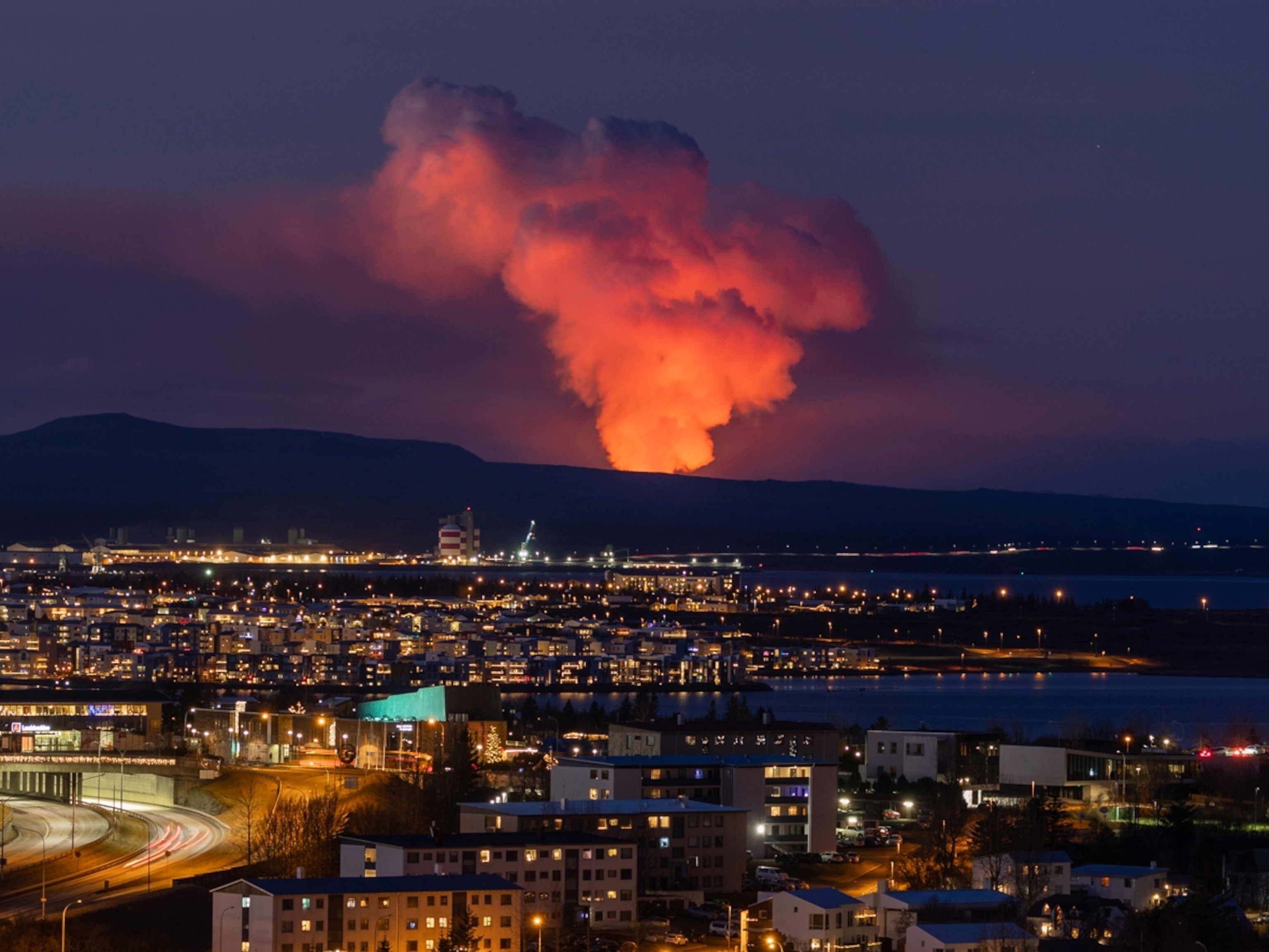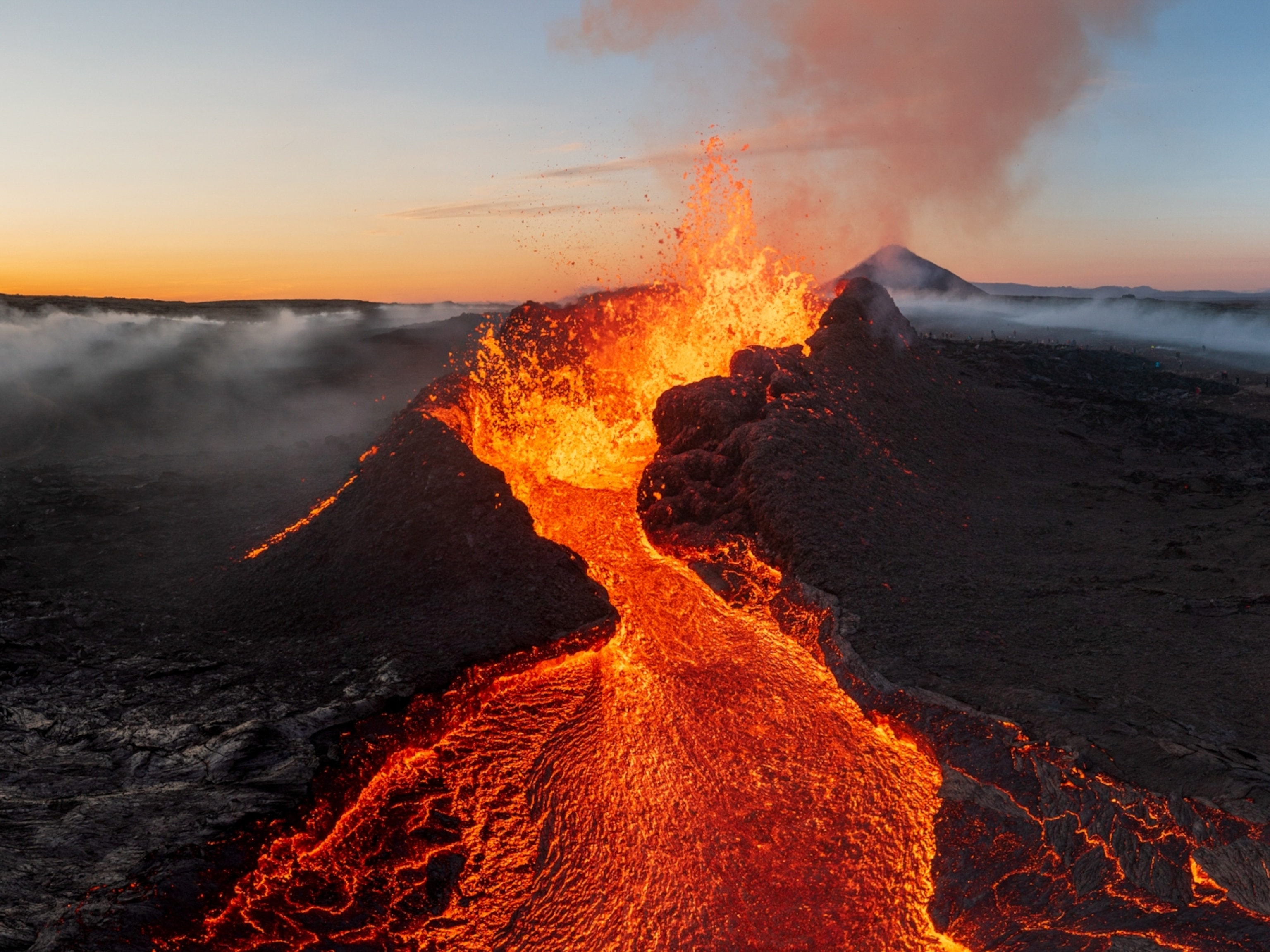
Night Hiking to Watch Kilauea’s Lava Meet the Sea
The Kilauea volcano is one of the world’s greatest natural spectacles. Located on Hawaii’s Big Island, just south of the sleepy coastal city of Hilo, its ebbs and flows have been battling the great Pacific Ocean for eons. Like a furious and erotic dance between two old and distant lovers, these powerful forces of nature have been twisting light and twirling smoke and bending the earth for ages, putting on a hypnotic display for those who come to watch this timeless tango.
The longer I stare into those fickle flames the more difficult it becomes to find words that can truly describe what lies in front of me. You can smell it. You can hear it. You can see it. You can feel it down to your bones. The very ground that we walk upon is being created before our eyes. Instead of spending any further time in pointless conversation with my fellow comrades who have joined me on this particular night, we all continue to stare in perfect silence. Not much to say really. I fear I’ve said too much already.
Indeed, the Hawaiian Archipelago is a unique geologic oddity. Surrounded by the infamous ring of fire, a circular region of the Pacific Ocean that accounts for over 75 percent of the world’s currently active volcanoes and 90 percent of the world’s major earthquakes, Hawaii stands alone. A classic example of a geologic hotspot, a weakness in the Earth’s mantle, magma has been rising from deep within the Earth for millions of years. Combined with the northwestward movement of the Pacific Plate, the largest tectonic plate in the world, this hot spot has been giving birth to some of the most awe inspiring terrain on the planet for eons. The locals call her the Aina. These islands are unquestionably alive. She has a pulse. She breathes and sleeps. She has a mind all her own.
From the city of Hilo, it is rather hard to imagine such a spectacle lies just an hour’s drive away. As one makes their way towards Kilauea, the dense rain forest of the Hamakua Coast slowly gives way to sporadic and spindly Ohia forest; a native tree to the islands and one of the few that can grow directly out of a recent lava flow. Soon enough even the Ohia vanishes, and a desolate scene that resembles a bomb site gives way. The road soon ends at the town of Kalapana and the journey begins, yet the trek across the lava fields does not come easily.
The flows of Kilauea are best viewed at night; thus, at least one leg of the mission must be done in darkness. However the distance is relatively short, just a few miles as the crow flies, the terrain is extremely unforgiving. Sharp and loose rocks riddle the landscape and have been the stage for countless injuries and trips to the emergency room, a statistic the author is no exception to. Yet like so many other adventures into the outdoors, this particular one yields especially high dividends, showcasing a phenomenon that is incredibly difficult to find. You will be hard pressed to find a similar display of the immense power of the natural world than what can be found on the eastern flanks of Kilauea.
For those that were fortunate to see this fantastic display earlier in 2013, surely I will be preaching to the choir. Up until just a few months ago, those fiery flows crashed violently into the Pacific Ocean, giving birth to the very land that most of us walk upon today. As the lava flows reach temperatures up to 900 degrees Celsius, the combined change in temperature with its conjunction with the sea can put on a fantastic display of pyrotechnics. The experience has a habit of changing those who see it, yet another statistic that the author is no exception to. Photos can be taken, words can be written, but nothing can replicate the experience.
For those of you who haven’t, give it time. As she has been for eons, Kilauea will one day continue that dramatic dance with the sea. When she does, take a trip to see her. Take time to gaze upon that endless ocean, that great wide and blue-eyed sea. Take notice of the shifting sands as they are created before you, listen to the falling rain as it patters upon the ground. Roast marshmallows on a lava flow, dance wildly with the locals at Uncle Robert’s, climb a coconut tree, lie with your back upon a horizon of black sand at Kaimu and stare blankly into the sky. Take a deep breath of those ocean winds and clear your cluttered mind if only for a moment, close your eyes and sit still for a while, listen to that perfect silence, that empty and endless space, contemplate its depth for an instant as you stare upon the edge of creation and you will then realize just how fantastic this wild world can be. Leave speechless and humbled like so many people have before you. All too often words lose their ability to describe such a moment and their meaning falls away entirely. For sometimes all one can do is wonder.
You May Also Like
Go Further
Animals
- Octopuses have a lot of secrets. Can you guess 8 of them?
- Animals
- Feature
Octopuses have a lot of secrets. Can you guess 8 of them? - This biologist and her rescue dog help protect bears in the AndesThis biologist and her rescue dog help protect bears in the Andes
- An octopus invited this writer into her tank—and her secret worldAn octopus invited this writer into her tank—and her secret world
- Peace-loving bonobos are more aggressive than we thoughtPeace-loving bonobos are more aggressive than we thought
Environment
- Listen to 30 years of climate change transformed into haunting musicListen to 30 years of climate change transformed into haunting music
- This ancient society tried to stop El Niño—with child sacrificeThis ancient society tried to stop El Niño—with child sacrifice
- U.S. plans to clean its drinking water. What does that mean?U.S. plans to clean its drinking water. What does that mean?
- Food systems: supporting the triangle of food security, Video Story
- Paid Content
Food systems: supporting the triangle of food security - Will we ever solve the mystery of the Mima mounds?Will we ever solve the mystery of the Mima mounds?
History & Culture
- Strange clues in a Maya temple reveal a fiery political dramaStrange clues in a Maya temple reveal a fiery political drama
- How technology is revealing secrets in these ancient scrollsHow technology is revealing secrets in these ancient scrolls
- Pilgrimages aren’t just spiritual anymore. They’re a workout.Pilgrimages aren’t just spiritual anymore. They’re a workout.
- This ancient society tried to stop El Niño—with child sacrificeThis ancient society tried to stop El Niño—with child sacrifice
- This ancient cure was just revived in a lab. Does it work?This ancient cure was just revived in a lab. Does it work?
Science
- The unexpected health benefits of Ozempic and MounjaroThe unexpected health benefits of Ozempic and Mounjaro
- Do you have an inner monologue? Here’s what it reveals about you.Do you have an inner monologue? Here’s what it reveals about you.
- Jupiter’s volcanic moon Io has been erupting for billions of yearsJupiter’s volcanic moon Io has been erupting for billions of years
- This 80-foot-long sea monster was the killer whale of its timeThis 80-foot-long sea monster was the killer whale of its time
Travel
- How to plan an epic summer trip to a national parkHow to plan an epic summer trip to a national park
- This town is the Alps' first European Capital of CultureThis town is the Alps' first European Capital of Culture
- This royal city lies in the shadow of Kuala LumpurThis royal city lies in the shadow of Kuala Lumpur
- This author tells the story of crypto-trading Mongolian nomadsThis author tells the story of crypto-trading Mongolian nomads




